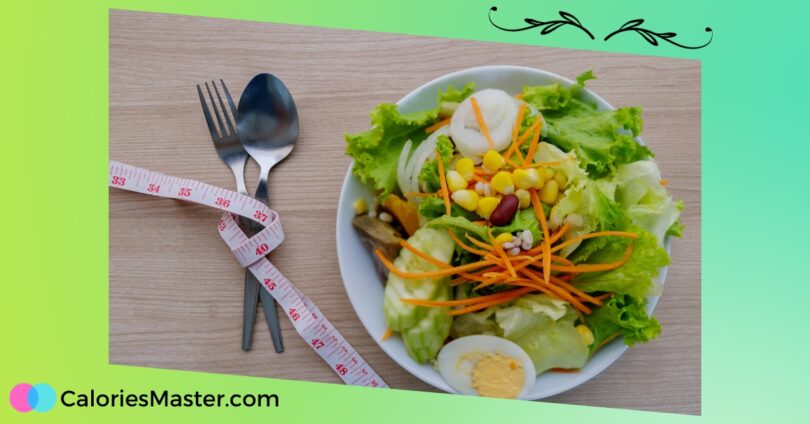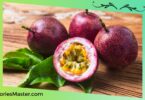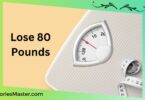Losing weight can be a challenging journey, but the right food choices can make all the difference. Eating a healthy, balanced diet is key to achieving weight loss goals. Incorporating certain foods into your diet can help boost metabolism, reduce cravings, and promote fat loss.
One of the most effective ways to lose weight is by reducing calorie intake. However, it’s important to ensure that your body is still receiving the necessary nutrients to function properly.
Foods that are high in protein, fibre, and healthy fats can help keep you feeling full and satisfied, while also providing essential nutrients.
Another important factor in weight loss is maintaining a consistent exercise routine. Combining a healthy diet with regular exercise can help you achieve your weight loss goals faster and more effectively.
In this article, we will explore the best foods to eat for weight loss and how they can help you reach your desired weight.
Understanding Weight Loss
Losing weight can be a challenging and frustrating process, but with the right approach, it can be achievable. Understanding the basics of weight loss is essential to help you achieve your goals. Here are some important things to keep in mind:
Calories
Weight loss is all about calories. To lose weight, you need to create a calorie deficit, which means you need to burn more calories than you consume. One pound of fat is equal to 3,500 calories, so to lose one pound a week, you need to create a deficit of 500 calories per day.
You can achieve this by reducing your calorie intake, increasing your physical activity, or a combination of both.
Macronutrients
Macronutrients are the three main nutrients that provide energy: carbohydrates, protein, and fat. Each macronutrient has a different effect on the body and can affect weight loss. For example, protein can help you feel full and satisfied, while carbohydrates can cause blood sugar spikes and crashes, leading to cravings.
Portion Control
Portion control is an important aspect of weight loss. Even healthy foods can lead to weight gain if consumed in large quantities. Use a food scale or measuring cups to ensure you are eating the correct portion sizes. Also, try to eat slowly and mindfully, paying attention to your hunger and fullness cues.
Hydration
Drinking enough water is essential for weight loss. Water helps to flush out toxins, aids in digestion, and can help you feel full. Aim to drink at least eight glasses of water per day.
Exercise
Exercise is an essential component of weight loss. It helps to burn calories, build muscle, and improve overall health. Aim to get at least 150 minutes of moderate-intensity exercise per week, such as brisk walking or cycling. You can also incorporate strength training to build muscle and boost your metabolism.
Remember, weight loss is not a quick fix and requires patience, consistency, and dedication. By following these basic principles, you can achieve your weight loss goals and improve your overall health and well-being.
Role of Food in Weight Loss
Caloric Intake
One of the most important factors in weight loss is caloric intake. Consuming more calories than you burn leads to weight gain while consuming fewer calories than you burn leads to weight loss.
To lose weight, you need to create a calorie deficit by either reducing your caloric intake or increasing your physical activity. It’s important to find a balance that works for you and to avoid extreme calorie restriction, which can be harmful to your health.
Nutrient Density
In addition to reducing caloric intake, it’s important to focus on nutrient-dense foods. Nutrient-dense foods are those that are rich in vitamins, minerals, and other essential nutrients while being relatively low in calories. Examples include fruits, vegetables, lean proteins, and whole grains.
These foods can help you feel full and satisfied while providing your body with the nutrients it needs to function properly.
Portion Control
Portion control is another important aspect of weight loss. Even healthy foods can contribute to weight gain if consumed in large quantities.
Using smaller plates, measuring portions, and paying attention to your body’s hunger and fullness signals can help you control your portion sizes. It’s also important to avoid mindless snacking and to plan your meals and snacks.
In summary, weight loss is achieved by creating a calorie deficit through a combination of reducing caloric intake and increasing physical activity. Choosing nutrient-dense foods and controlling portion sizes can also help support weight loss efforts.
Types of Food for Weight Loss
Proteins
Proteins are an important macronutrient that can help with weight loss. They help to keep you feeling full, increase muscle mass, and boost metabolism. Some protein-rich foods that are great for weight loss include:
- Lean meats such as chicken and turkey
- Fish and seafood
- Beans and lentils
- Nuts and seeds
- Greek yoghurt
- Cottage cheese
Fibre-Rich Foods
Fibre is another important nutrient that can aid in weight loss. It helps to keep you feeling full, regulates blood sugar levels, and promotes healthy digestion. Some fibre-rich foods that are great for weight loss include:
- Fruits such as apples, berries, and pears
- Vegetables such as broccoli, spinach, and carrots
- Whole grains such as brown rice and quinoa
- Legumes such as chickpeas and black beans
Healthy Fats
Healthy fats are essential for overall health and can also aid in weight loss. They help to keep you feeling full, reduce inflammation, and improve heart health. Some healthy fat-rich foods that are great for weight loss include:
- Avocado
- Olive oil
- Nuts and seeds
- Fatty fish such as salmon and tuna
Low-Glycemic Foods
Low-glycemic foods are those that have a minimal impact on blood sugar levels. They can help to keep you feeling full and prevent cravings. Some low-glycemic foods that are great for weight loss include:
- Berries
- Non-starchy vegetables such as broccoli and cauliflower
- Legumes such as lentils and chickpeas
- Whole grains such as brown rice and quinoa
Remember, incorporating a variety of these foods into your diet can help you achieve your weight loss goals healthily and sustainably.
Meal Planning for Weight Loss
When it comes to weight loss, meal planning is a crucial aspect. Planning your meals can help you stay on track with your weight loss goals and avoid unhealthy food choices. Here are some tips for meal planning for weight loss.
Breakfast
Breakfast is the most important meal of the day, and it’s essential to start your day with a healthy meal. Here are some healthy breakfast options:
- Oatmeal with fruit and nuts
- Greek yoghurt with berries and honey
- Scrambled eggs with whole-grain toast
Lunch
Lunch is an important meal that can help you stay energized throughout the day. Here are some healthy lunch options:
- Grilled chicken or fish with vegetables
- Salad with grilled chicken or tofu
- Whole-grain sandwich with lean protein and vegetables
Dinner
Dinner is the last meal of the day, and it’s important to make it healthy and satisfying. Here are some healthy dinner options:
- Grilled or baked salmon with vegetables
- Grilled chicken with roasted sweet potatoes
- Vegetable stir-fry with tofu or lean protein
Snacks
Snacks can help you stay energized and avoid overeating during meals. Here are some healthy snack options:
- Apple slices with almond butter
- Carrots and hummus
- Greek yoghurt with mixed berries
Remember to include a variety of foods in your meals and snacks to ensure that you’re getting all the nutrients your body needs. Stick to whole foods and avoid processed foods as much as possible.
Common Myths About Weight Loss Foods
There are many myths surrounding weight loss foods that can make it difficult to know what to eat when trying to lose weight. Here are some of the most common myths:
Myth 1: You must eat low-fat foods to lose weight
While it is true that eating a diet high in fat can lead to weight gain, not all fats are created equal.
Some fats, such as those found in avocados and nuts, can help you lose weight by keeping you feeling full for longer. It is important to focus on eating healthy fats in moderation rather than cutting them out completely.
Myth 2: You should avoid carbohydrates
Carbohydrates are an important source of energy for the body, and cutting them out completely can lead to fatigue and other health problems.
However, it is important to choose the right types of carbohydrates. Complex carbohydrates, such as those found in whole grains, fruits, and vegetables, are a better choice than simple carbohydrates like sugar and refined flour.
Myth 3: You should only eat salads
While salads can be a healthy choice, they are not the only option for weight loss. It is important to eat a variety of foods to ensure you are getting all the nutrients your body needs.
Incorporating lean proteins, healthy fats, and complex carbohydrates into your diet can help you feel full and satisfied while still losing weight.
Myth 4: You can eat as much healthy food as you want
While healthy foods are generally lower in calories than unhealthy foods, it is still important to watch your portion sizes.
Eating too much of anything, even healthy foods, can lead to weight gain. It is important to pay attention to your body’s hunger and fullness cues and to eat until you are satisfied, but not overly full.
By understanding and debunking these common myths, you can make informed choices about the foods you eat and achieve your weight loss goals healthily and sustainably.
Food for Weight Loss – Conclusion
In conclusion, weight loss is not just about eating less food. It is about eating the right food in the right amounts. Incorporating a balanced diet with regular exercise is key to achieving and maintaining a healthy weight.
It is important to remember that weight loss is a journey and not a destination. It requires patience, dedication and consistency. It is not a quick fix, but a lifestyle change that can lead to long-term health benefits.
Here are some key takeaways to keep in mind when it comes to food for weight loss:
- Focus on whole, nutrient-dense foods such as fruits, vegetables, lean proteins, and whole grains.
- Avoid processed and high-calorie foods such as sugary drinks, fast food, and snacks.
- Portion control is important. Use smaller plates, measure your food, and avoid eating in front of the TV or computer.
- Stay hydrated by drinking plenty of water throughout the day.
- Be mindful of your eating habits and listen to your body’s hunger and fullness cues.
- Incorporate regular physical activity into your daily routine.
By following these guidelines, you can make positive changes to your diet and lifestyle that can lead to weight loss and improved overall health.









